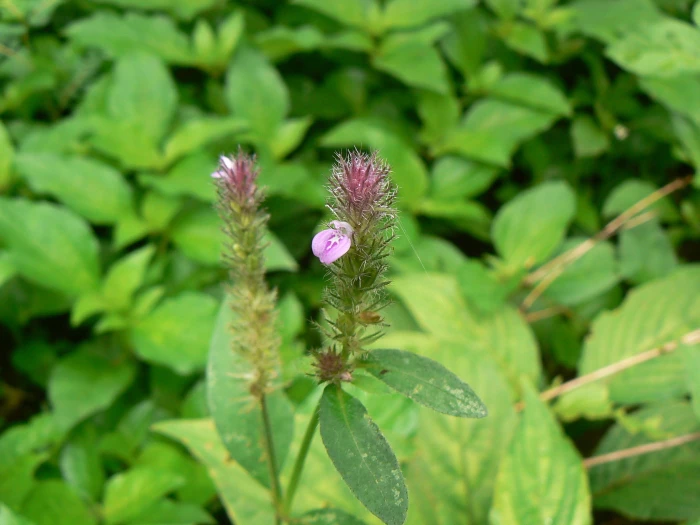Spreading Ammannia
(Rostellularia procumbens)
Spreading Ammannia (Rostellularia procumbens)
/
/

© Dinesh Valke
CC BY-SA 4.0
Image By:
© Dinesh Valke
Recorded By:
Copyright:
CC BY-SA 4.0
Copyright Notice:
Photo by: © Dinesh Valke | License Type: CC BY-SA 4.0 | License URL: http://creativecommons.org/licenses/by-sa/4.0/ | Uploader: dineshvalke | Publisher: iNaturalist |



















Estimated Native Range
Climate Requirements for Mankato, Minnesota
| This Plant | Your Site | Plant Suitability for Your Location | ||
|---|---|---|---|---|
| • Precipitation | 7" - 168" | 30" | Your precipitation may be insufficient for this plant. Irrigate N" / year. | Irrigate N" / year |
| • High Temp. | 63°F - 107°F | 84°F | Your summer temperatures are normal for this plant. | Excellent |
| • Low Temp. | -14°F - 72°F | 3°F | Your winter temperatures are normal for this plant | Excellent |
This plant should grow well at your location with about N inches per year (Y minutes per month) of irrigation.
Summary
Rostellularia procumbens, commonly known as Spreading Ammannia, is an evergreen herb native to wetlands, moist woodlands, and riparian zones across Southeast and East Asia. It exhibits a moderate growth rate, reaching heights and widths of 1-1.5 feet (0.3-0.5 meters). This plant features small, tubular flowers that are typically purple or white and are considered showy due to their abundance. These flowers bloom in the summer and spring, attracting pollinators. Spreading Ammannia has a sprawling habit and can form dense mats of foliage.
Spreading Ammannia is valued for its vibrant flowers and ability to thrive in wet conditions, making it suitable for water gardens, rain gardens, and as a ground cover in moist areas of the landscape. It is adaptable to a range of soil types, including clay, loam, or sandy soils, but requires consistent moisture to flourish. While it prefers full sun or part shade, it is tolerant of a variety of light conditions. Gardeners should be aware that in some regions, it can become invasive due to its rapid spreading capability.CC BY-SA 4.0
Spreading Ammannia is valued for its vibrant flowers and ability to thrive in wet conditions, making it suitable for water gardens, rain gardens, and as a ground cover in moist areas of the landscape. It is adaptable to a range of soil types, including clay, loam, or sandy soils, but requires consistent moisture to flourish. While it prefers full sun or part shade, it is tolerant of a variety of light conditions. Gardeners should be aware that in some regions, it can become invasive due to its rapid spreading capability.CC BY-SA 4.0
Plant Description
- Plant Type:
- Height: 1-1.5 feet
- Width: 1-1.5 feet
- Growth Rate: Moderate
- Flower Color: Purple, White
- Flowering Season: Spring, Summer
- Leaf Retention: Evergreen
Growth Requirements
- Sun: Full Sun, Part Shade
- Water: High
- Drainage: Medium, Slow
Common Uses
Bee Garden, Bird Garden, Butterfly Garden, Hummingbird Garden, Low Maintenance, Water Garden
Natural Habitat
Native to wetlands, moist woodlands, and riparian zones across Southeast and East Asia
Other Names
Common Names:
Scientific Names: Rostellularia procumbens , Dianthera americana , Dianthera ciliata , Ecbolium procumbens , Justicia cradengensis , Justicia elegans , Justicia hayatae var. decumbens , Justicia hayatai var. decumbens , Justicia hirtella , Justicia japonica
GBIF Accepted Name: Rostellularia procumbens